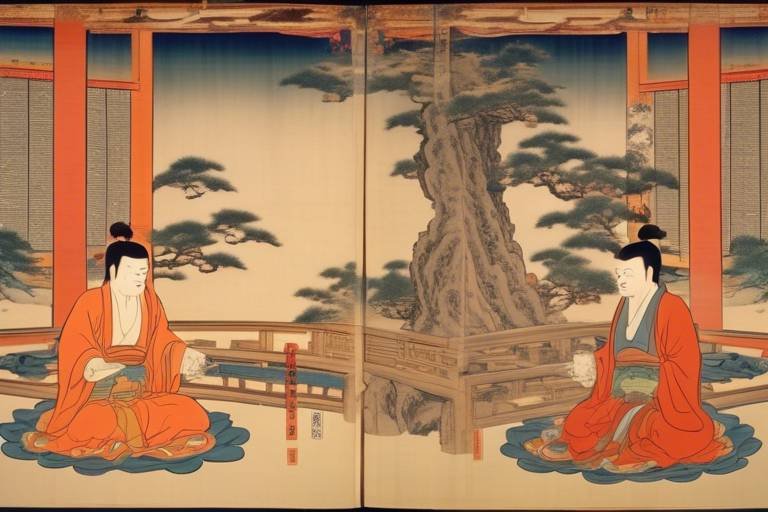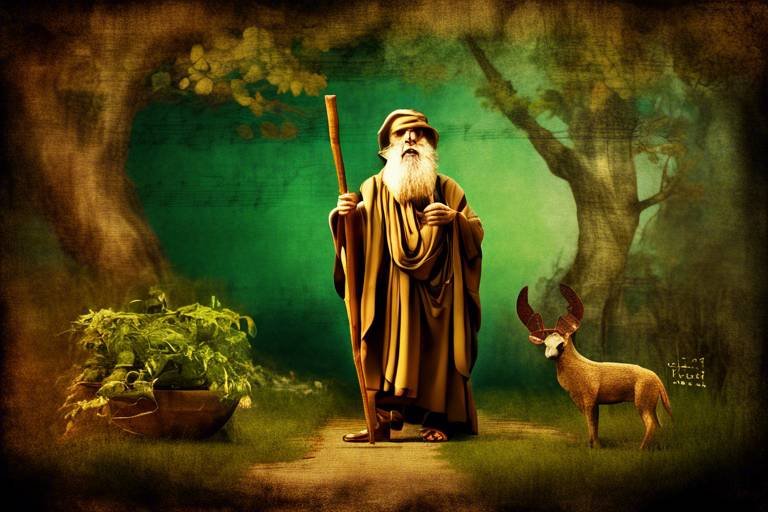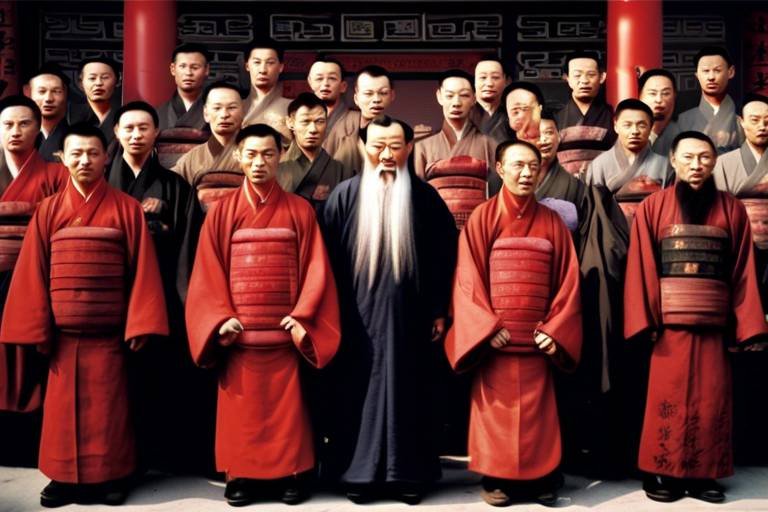Ancient Eastern Philosophies – Buddhism, Taoism, Shinto
The world of ancient Eastern philosophies is a fascinating tapestry woven from the threads of Buddhism, Taoism, and Shinto. Each of these spiritual paths offers unique insights into the nature of existence, the self, and the universe. Imagine walking through a serene garden, where every flower represents a different belief system, each with its own vibrant colors and fragrances. In this article, we will delve deep into the core principles, practices, and historical contexts of these three philosophies, illuminating their contributions to Eastern thought and spirituality.
At the heart of Buddhism lies a profound quest for enlightenment, a journey that begins with understanding the Four Noble Truths. These truths serve as a roadmap, guiding practitioners through the complexities of life and suffering. Meanwhile, Taoism invites us to embrace the natural flow of the universe, encouraging us to live in harmony with the Tao. This philosophy teaches that simplicity, humility, and compassion are not just virtues but essential elements of a fulfilling life. On the other hand, Shinto, the indigenous spirituality of Japan, connects deeply with nature and the kami—the spirits that inhabit it. Through rituals and festivals, Shinto practitioners celebrate the changing seasons and maintain harmony with these divine entities.
The interplay between these philosophies creates a rich landscape of spiritual exploration. For instance, while Buddhism focuses on the individual’s path to enlightenment, Taoism emphasizes the importance of aligning oneself with the universe’s natural rhythms. Shinto, in contrast, fosters a communal sense of belonging through its vibrant rituals and festivals. Together, they offer a holistic approach to understanding life, death, and everything in between.
As we navigate through the intricate beliefs and practices of Buddhism, Taoism, and Shinto, we will uncover how these philosophies not only shaped their respective cultures but also continue to influence modern spiritual practices. So, buckle up as we embark on this enlightening journey through ancient Eastern philosophies, exploring their unique perspectives and timeless wisdom.
Buddhism originated in ancient India and emphasizes the Four Noble Truths and the Eightfold Path as a means to achieve enlightenment and liberation from suffering.
Taoism focuses on living in harmony with the Tao, or the natural way of the universe, promoting simplicity, humility, and compassion as key virtues.
The Tao Te Ching and Zhuangzi are foundational texts in Taoism, offering insights into its philosophical principles and guiding followers in their spiritual journeys.
Taoist practices include meditation, tai chi, and various rituals aimed at aligning oneself with the Tao and achieving spiritual balance.
Taoism has significantly influenced Chinese art, literature, and medicine, promoting concepts of balance, harmony, and the interconnectedness of all things.
Buddhism has several branches, including Theravada, Mahayana, and Vajrayana, each with distinct teachings, practices, and cultural expressions.
Shinto, the indigenous spirituality of Japan, centers around the worship of kami (spirits) and emphasizes rituals, festivals, and a deep connection to nature.
Shinto rituals, such as purification and offerings, play a crucial role in maintaining harmony with the kami and celebrating seasonal changes through vibrant festivals.
Shrines serve as sacred spaces where practitioners can connect with the kami, offering a place for worship, reflection, and community gatherings.
- What is the main goal of Buddhism? The main goal of Buddhism is to achieve enlightenment and liberation from suffering through understanding the Four Noble Truths and following the Eightfold Path.
- How does Taoism view nature? Taoism emphasizes living in harmony with nature and encourages individuals to align with the natural flow of the universe, known as the Tao.
- What is the significance of kami in Shinto? Kami are spirits that represent various aspects of nature and life; they are central to Shinto worship and rituals, fostering a deep connection to the environment.
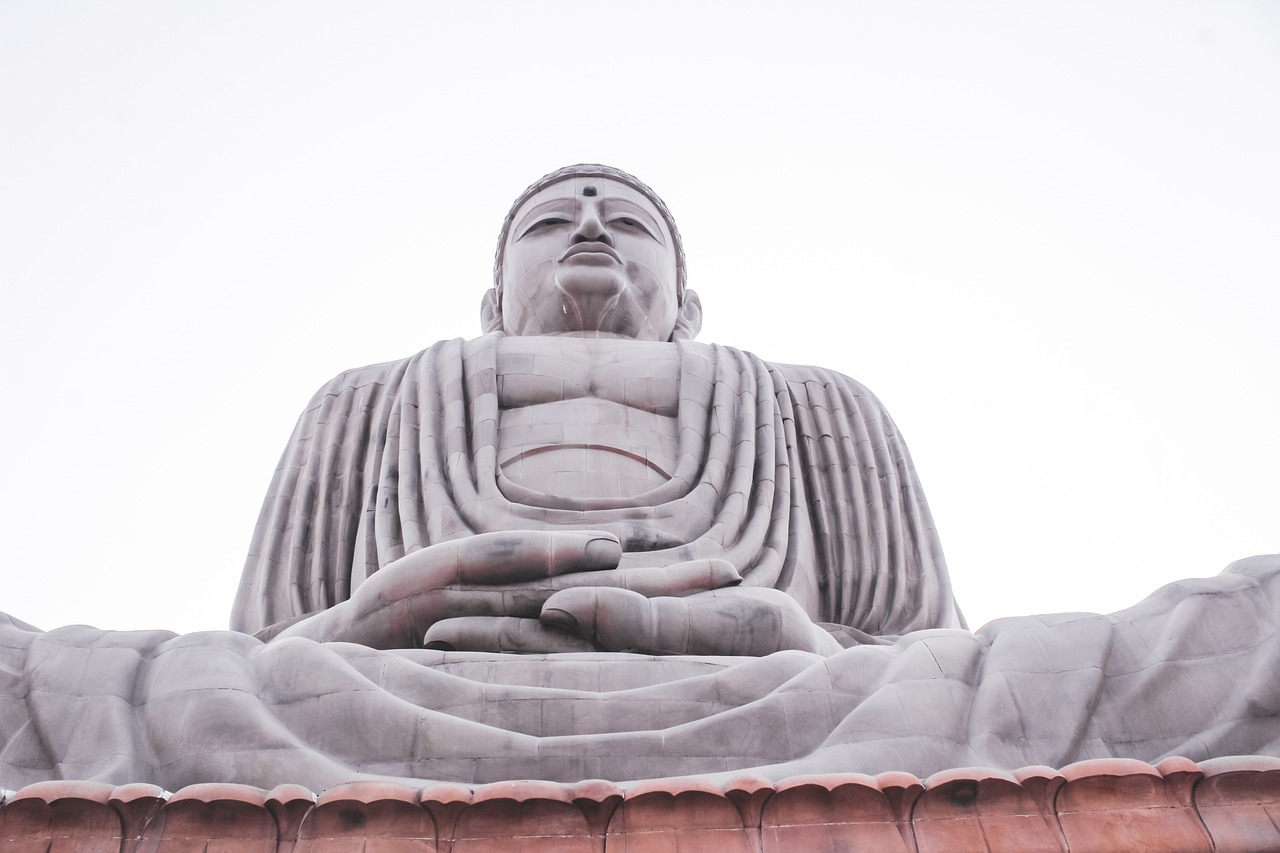
Buddhism: Origins and Core Beliefs
Buddhism, a profound and transformative spiritual tradition, originated in ancient India around the 5th century BCE. It was founded by Siddhartha Gautama, known as the Buddha, who sought to understand the nature of suffering and the path to liberation. Central to Buddhism are the Four Noble Truths, which articulate the reality of suffering and the means to transcend it:
- The Truth of Suffering (Dukkha): Life is filled with suffering and dissatisfaction.
- The Truth of the Cause of Suffering: Suffering arises from desire and attachment.
- The Truth of the Cessation of Suffering: It is possible to end suffering by overcoming desire.
- The Truth of the Path to the Cessation of Suffering: The Eightfold Path provides a practical guideline to achieve this.
These truths lay the foundation for the spiritual journey of a Buddhist. The Eightfold Path consists of eight interconnected practices that guide individuals towards enlightenment and liberation:
- Right Understanding: Comprehending the nature of reality and the truths of existence.
- Right Intent: Cultivating a mindset of love and compassion.
- Right Speech: Speaking truthfully and kindly.
- Right Action: Engaging in ethical conduct.
- Right Livelihood: Choosing a profession that does not harm others.
- Right Effort: Diligently working to improve oneself.
- Right Mindfulness: Developing awareness of the present moment.
- Right Concentration: Practicing meditation to cultivate deep states of focus.
At its core, Buddhism teaches that through understanding and practice, individuals can attain Nirvana—a state of liberation from the cycle of birth, death, and rebirth (samsara). This journey towards enlightenment is both personal and communal, as practitioners often engage in meditation, rituals, and community gatherings to support one another.
Buddhism has evolved over centuries, giving rise to various schools of thought, each interpreting these core teachings in unique ways. From the austere practices of Theravada Buddhism, which emphasizes individual enlightenment, to the more communal and compassionate approach of Mahayana Buddhism, there is a rich tapestry of beliefs and practices that reflect the diverse cultures in which Buddhism has taken root.
In conclusion, Buddhism offers a profound framework for understanding the human experience. By recognizing the nature of suffering and following the path laid out by the Buddha, individuals can embark on a transformative journey towards peace, compassion, and ultimate liberation.
What are the main beliefs of Buddhism?
Buddhism is centered around the Four Noble Truths and the Eightfold Path, which guide practitioners in overcoming suffering and achieving enlightenment.
Who was the Buddha?
The Buddha, Siddhartha Gautama, was a prince who renounced his royal life to seek the truth about suffering and ultimately attained enlightenment.
What is Nirvana?
Nirvana is the ultimate goal in Buddhism, representing liberation from the cycle of birth and rebirth, characterized by the cessation of suffering and desire.
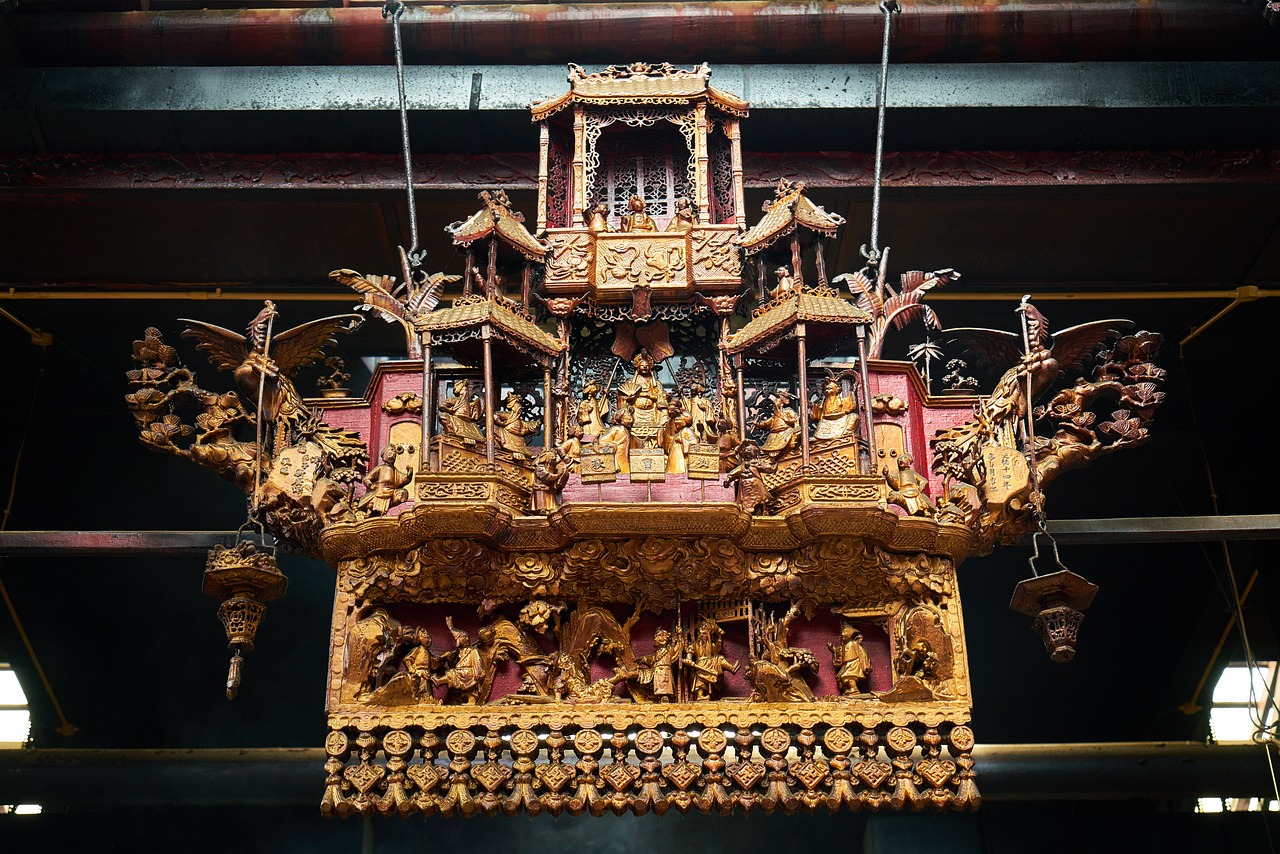
Taoism: The Way of Nature
Taoism, often referred to as "the Way," is a profound philosophical and spiritual tradition that originated in ancient China. It invites us to observe the world around us and understand our place within it. At its core, Taoism emphasizes living in harmony with the Tao, which can be understood as the natural order of the universe. Imagine standing by a flowing river, feeling the water's current guide you effortlessly downstream; this is the essence of following the Tao. It's about embracing simplicity, humility, and compassion in our daily lives.
One of the most captivating aspects of Taoism is its holistic approach to existence. It teaches that everything is interconnected, much like the threads of a vast tapestry. Each thread represents a different aspect of life, and when woven together, they create a beautiful picture of harmony. This interconnectedness encourages us to respect nature and recognize the importance of balance in all things. The philosophy suggests that by aligning ourselves with the natural rhythms of life, we can achieve a state of peace and fulfillment.
Central to Taoist thought are the concepts of wu wei and yin-yang. Wu wei, often translated as "non-action" or "effortless action," is not about being passive but rather about flowing with the natural course of events. Think of it as dancing with the wind rather than fighting against it. On the other hand, the yin-yang symbol represents the dualities present in the universe—light and dark, male and female, active and passive. It teaches us that these opposites are not in conflict but are complementary forces that create balance.
Taoism encourages various practices that help individuals connect with the Tao. Meditation is a fundamental practice, allowing practitioners to quiet their minds and attune themselves to the rhythms of nature. Additionally, physical practices like tai chi embody the principles of Taoism, promoting balance and harmony through graceful movements. These practices serve as a reminder that we are not separate from nature; we are a part of it, and nurturing this connection can lead to a deeper understanding of ourselves and the world around us.
The richness of Taoism is captured in its foundational texts, primarily the Tao Te Ching and the Zhuangzi. The Tao Te Ching, attributed to Laozi, is a poetic exploration of the Tao and offers practical wisdom for living a harmonious life. It is filled with paradoxes and insights that challenge conventional thinking, urging readers to see beyond the surface of things. On the other hand, the Zhuangzi presents stories and anecdotes that illustrate the principles of Taoism in a more whimsical and accessible manner. Together, these texts provide a comprehensive understanding of Taoist philosophy and its application in daily life.
Taoist practices are diverse and deeply rooted in the philosophy's principles. Meditation is perhaps the most well-known practice, allowing individuals to cultivate mindfulness and connect with the Tao. Through meditation, practitioners learn to observe their thoughts and emotions without attachment, leading to a greater sense of clarity and peace. Rituals also play a significant role in Taoism, often involving offerings to the spirits and ancestors, which fosters a sense of gratitude and connection to the past.
The influence of Taoism extends far beyond spiritual practices; it has profoundly shaped Chinese culture, art, and medicine. In art, Taoist themes often celebrate the beauty of nature, depicting landscapes that evoke a sense of tranquility and harmony. Literature, too, has been enriched by Taoist ideas, inspiring poets and writers to explore themes of nature, existence, and the human experience. Furthermore, traditional Chinese medicine incorporates Taoist principles, emphasizing balance and harmony within the body as essential for health and well-being.
As we delve deeper into the tapestry of Eastern philosophies, it’s important to recognize that Buddhism, like Taoism, has its own rich history and diversity. Buddhism has several branches, including Theravada, Mahayana, and Vajrayana, each offering distinct teachings and cultural expressions. These branches reflect the adaptability of Buddhism, allowing it to resonate with various cultures and societies throughout history.
- What is the main goal of Taoism? The main goal of Taoism is to achieve harmony with the Tao, leading to a balanced and fulfilling life.
- How does Taoism view nature? Taoism sees nature as a reflection of the Tao and believes that living in accordance with natural laws leads to peace and enlightenment.
- Are there any specific practices in Taoism? Yes, practices such as meditation, tai chi, and rituals are integral to Taoism, helping individuals connect with the Tao.

Key Texts of Taoism
This article explores the fundamental principles, practices, and historical contexts of Buddhism, Taoism, and Shinto, highlighting their unique perspectives and contributions to Eastern thought and spirituality.
Buddhism originated in ancient India and emphasizes the Four Noble Truths and the Eightfold Path as a means to achieve enlightenment and liberation from suffering.
Taoism focuses on living in harmony with the Tao, or the natural way of the universe, promoting simplicity, humility, and compassion as key virtues.
When diving into the fascinating world of Taoism, one quickly encounters its foundational texts that serve as guiding lights for practitioners and scholars alike. The most significant of these are the Tao Te Ching and the Zhuangzi, both of which offer profound insights into the philosophy and practice of Taoism.
The Tao Te Ching, attributed to the sage Laozi, is a poetic masterpiece that encapsulates the essence of the Tao. It consists of 81 short chapters that explore the nature of the Tao and the virtue of wu wei, or effortless action. This text encourages readers to embrace simplicity and humility, urging them to align their lives with the natural flow of the universe. Its teachings can be likened to a gentle stream that guides us, rather than a roaring river that demands our control.
On the other hand, the Zhuangzi, named after its author, expands on the ideas presented in the Tao Te Ching. This text is known for its rich storytelling and parables, which illustrate the relativity of concepts such as right and wrong, life and death. Zhuangzi’s work invites readers to question their perceptions and to embrace the spontaneity of life. It's as if he’s saying, “Why chase after certainty when you can dance with uncertainty?”
Both texts not only reflect the philosophical underpinnings of Taoism but also serve as practical guides for those seeking to live in harmony with the world around them. They encourage a deep connection with nature and a recognition of the interconnectedness of all beings. In essence, they are not just books; they are companions on a spiritual journey.
Taoist practices include meditation, tai chi, and various rituals aimed at aligning oneself with the Tao and achieving spiritual balance.
Taoism has significantly influenced Chinese art, literature, and medicine, promoting concepts of balance, harmony, and the interconnectedness of all things.
Buddhism has several branches, including Theravada, Mahayana, and Vajrayana, each with distinct teachings, practices, and cultural expressions.
Shinto, the indigenous spirituality of Japan, centers around the worship of kami (spirits) and emphasizes rituals, festivals, and a deep connection to nature.
Shinto rituals, such as purification and offerings, play a crucial role in maintaining harmony with the kami and celebrating seasonal changes through vibrant festivals.
Shrines serve as sacred spaces where practitioners can connect with the kami, offering a place for worship, reflection, and community gatherings.
- What is the main purpose of Taoism? Taoism aims to help individuals live in harmony with the Tao, promoting balance and simplicity in life.
- How do the key texts of Taoism influence its practice? The Tao Te Ching and Zhuangzi provide philosophical guidance and practical advice for living in accordance with the Tao.
- Are there rituals in Taoism? Yes, Taoism includes various rituals, meditation practices, and physical exercises like tai chi to cultivate spiritual balance.
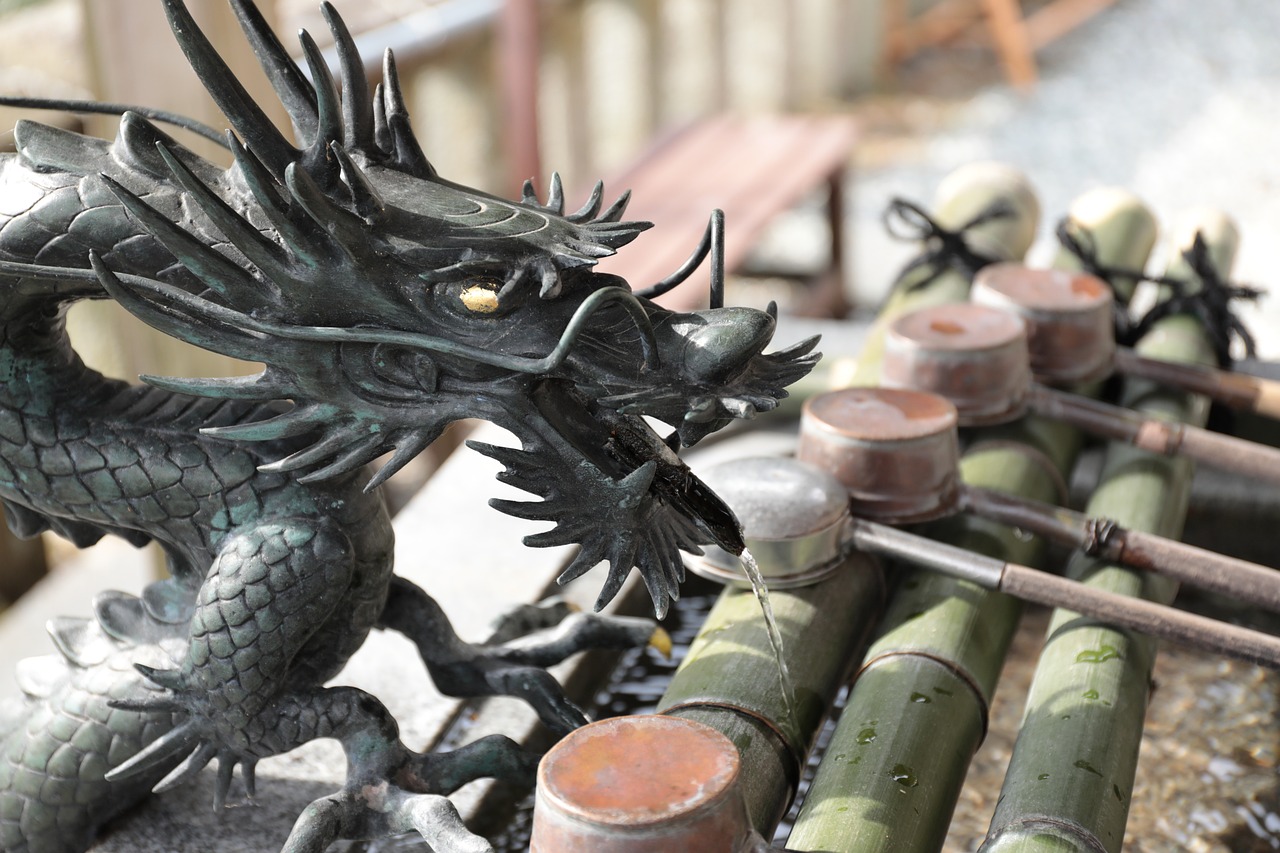
Taoist Practices: Meditation and Rituals
Taoism, with its profound emphasis on harmony and balance, offers a rich tapestry of practices that guide its followers toward a deeper understanding of the universe and their place within it. Central to these practices is meditation, which serves as a gateway to inner peace and enlightenment. Unlike some other traditions that may focus heavily on verbal prayers or structured worship, Taoist meditation is often about stillness and observation, allowing practitioners to align themselves with the natural flow of the Tao, or 'the Way.'
One popular form of meditation in Taoism is Zuòwàng, which translates to 'sitting and forgetting.' This practice encourages individuals to let go of their thoughts and distractions, entering a state of pure awareness. Imagine sitting quietly, allowing your thoughts to drift away like leaves on a stream, creating space for the profound wisdom of the universe to emerge. The goal here is to cultivate a sense of tranquility and connection with the cosmos, leading to a more harmonious life.
In addition to meditation, Taoist rituals play a vital role in the spiritual lives of practitioners. These rituals often involve offerings to the kami (spirits) and ancestors, performed at home altars or in sacred spaces. Rituals can include:
- Purification: Cleansing the body and spirit to prepare for communion with the divine.
- Offerings: Presenting food, incense, or symbolic items to honor the spirits and seek their blessings.
- Festivals: Celebrating seasonal changes and significant events in the Taoist calendar with community gatherings and ceremonies.
These rituals foster a deep sense of community and connection, not just with the divine but also with fellow practitioners. They serve as a reminder of the interconnectedness of all life, a core belief in Taoist philosophy. Engaging in these practices can be likened to tuning a musical instrument; it requires patience and dedication to achieve harmony, but the results can be profoundly rewarding.
Moreover, tai chi is another significant practice within Taoism that combines meditation, martial arts, and physical exercise. This graceful form of movement is not just about self-defense; it’s a moving meditation that embodies the principles of yin and yang, promoting balance and flexibility in both the body and mind. Picture yourself flowing through a series of slow, deliberate movements, each one a dance with the universe, each breath a connection to the rhythm of life.
Ultimately, Taoist practices—whether through quiet meditation, vibrant rituals, or the fluid motions of tai chi—invite practitioners to immerse themselves in the natural world and cultivate a profound sense of peace. As followers engage in these practices, they not only deepen their spiritual journey but also enrich their everyday lives, finding joy in the simple act of being present in the moment.
1. What is the main goal of Taoist meditation?
The primary goal of Taoist meditation is to achieve harmony with the Tao, allowing practitioners to experience inner peace and a deeper understanding of the universe.
2. How does tai chi relate to Taoism?
Tai chi is a form of moving meditation that embodies Taoist principles, promoting balance, flexibility, and a connection to the natural flow of life.
3. Are Taoist rituals important for spiritual growth?
Yes, rituals are crucial in Taoism as they help practitioners connect with the kami and ancestors, fostering community and reinforcing the interconnectedness of all life.
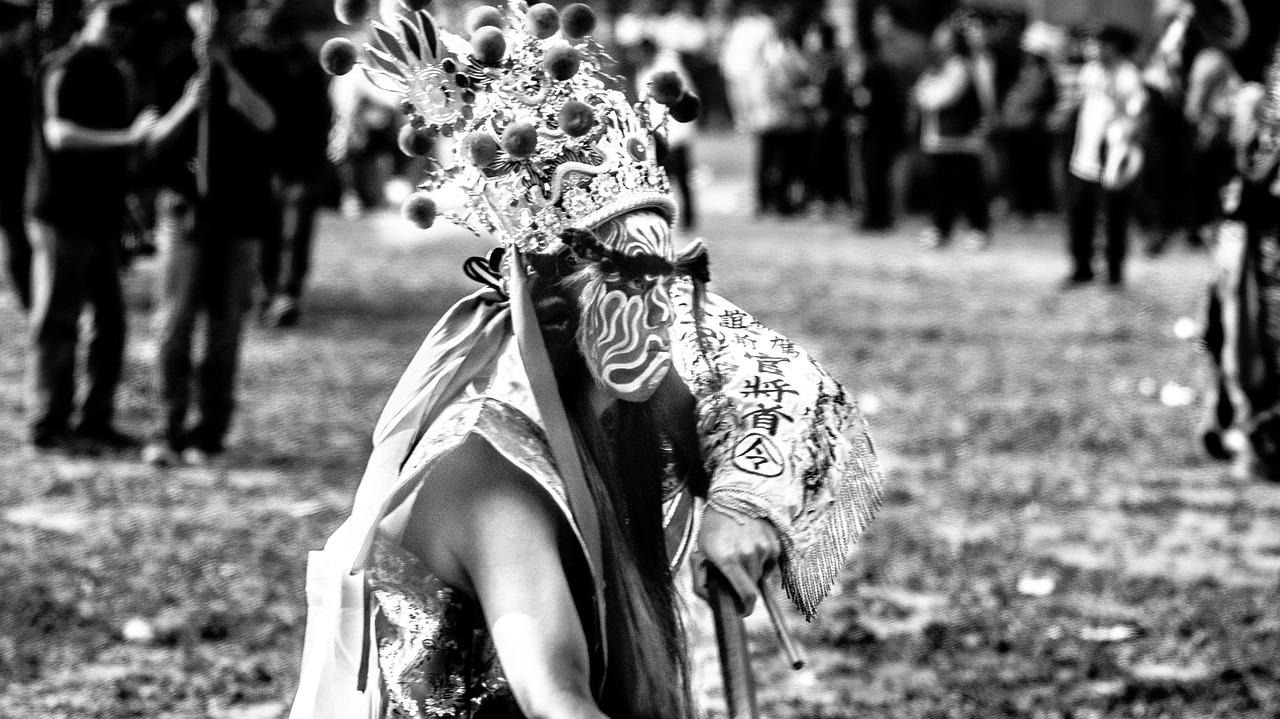
Influence of Taoism on Chinese Culture
Taoism has woven itself into the very fabric of Chinese culture, influencing everything from art and literature to medicine and philosophy. Imagine a vast tapestry, where each thread represents a different aspect of life, and Taoism is the vibrant color that ties them all together. Its core principles of harmony, balance, and the natural way of the universe resonate deeply within Chinese society, shaping the way people perceive their relationship with nature and the cosmos.
One of the most profound impacts of Taoism can be seen in Chinese art. Traditional Chinese paintings often reflect Taoist themes, portraying serene landscapes that emphasize the beauty of nature and the importance of living in harmony with it. Artists strive to capture the essence of the Tao, showcasing mountains, rivers, and flora in a way that invites viewers to experience tranquility and reflection. These artworks are not just visual representations; they embody the Taoist philosophy of simplicity and the interconnectedness of all things.
In literature, Taoism has inspired countless poets and writers throughout history. The works of renowned poets like Laozi and Zhuangzi explore the nature of existence, the fleetingness of life, and the pursuit of wisdom through simplicity. Their writings encourage readers to embrace spontaneity and to find joy in the present moment, a concept that resonates deeply in contemporary life. The whimsical tales of Zhuangzi, for instance, often illustrate the paradoxes of life, prompting readers to reflect on the nature of reality and the importance of perspective.
Moreover, Taoism has significantly influenced traditional Chinese medicine, which emphasizes the balance of yin and yang, the vital energies that flow through the body. Practitioners of traditional Chinese medicine seek to restore harmony within the body through herbal remedies, acupuncture, and dietary practices. This holistic approach mirrors the Taoist belief that health is not merely the absence of illness but the presence of balance and flow in one’s life.
As we delve deeper into the influence of Taoism, we can also see its impact on social practices and festivals. Many Chinese festivals, such as the Mid-Autumn Festival and the Dragon Boat Festival, incorporate Taoist elements, celebrating nature and the changing seasons. Rituals performed during these festivals often pay homage to the Taoist deities, reflecting a deep-rooted respect for the spiritual forces that govern the natural world.
In summary, the influence of Taoism on Chinese culture is profound and multifaceted. It serves as a guiding philosophy that encourages individuals to seek balance, embrace nature, and cultivate a sense of inner peace. As we navigate the complexities of modern life, the teachings of Taoism continue to offer valuable insights, reminding us of the importance of living in harmony with ourselves and the world around us.
- What is the main principle of Taoism? The main principle of Taoism is to live in harmony with the Tao, which is the fundamental nature of the universe.
- How does Taoism influence Chinese art? Taoism influences Chinese art by emphasizing themes of nature, simplicity, and harmony, often depicted in traditional paintings.
- What is the role of yin and yang in Taoism? Yin and yang represent the dualities of life and the balance between opposing forces, which is essential for harmony in Taoist philosophy.
- Are there any festivals that celebrate Taoism? Yes, many Chinese festivals incorporate Taoist elements, celebrating nature and the changing seasons.

Branches of Buddhism
Buddhism, a rich and diverse tradition, has evolved over the centuries into several branches, each offering unique insights and practices. The main branches of Buddhism can be broadly categorized into three primary schools: Theravada, Mahayana, and Vajrayana. While they share core beliefs, such as the Four Noble Truths and the Eightfold Path, they differ significantly in their interpretations, rituals, and cultural expressions.
Theravada Buddhism, often referred to as the "Teaching of the Elders," is considered the oldest form of Buddhism. Predominantly practiced in Sri Lanka, Thailand, Burma, Cambodia, and Laos, Theravada emphasizes individual enlightenment through meditation and ethical living. It holds the Pali Canon as its sacred scripture, which is a collection of texts that provide guidance on the Buddha's teachings. In this branch, the ideal practitioner is the arahant, a person who has attained enlightenment and liberation from the cycle of rebirth.
On the other hand, Mahayana Buddhism, which translates to "The Great Vehicle," emerged around the 1st century CE and is widely practiced in China, Japan, Korea, and Vietnam. Mahayana introduces the concept of the Bodhisattva, an enlightened being who chooses to remain in the cycle of rebirth to help others achieve enlightenment. This branch is characterized by its expansive range of texts, including the Lotus Sutra and the Heart Sutra, which emphasize compassion and the potential for all beings to attain Buddhahood.
Lastly, we have Vajrayana Buddhism, also known as Tantric or Esoteric Buddhism, which developed in India and later spread to Tibet and Mongolia. This branch incorporates elements of both Theravada and Mahayana but adds a unique layer of rituals, mantras, and meditation techniques aimed at achieving enlightenment more swiftly. Vajrayana practitioners often engage in complex rituals and visualizations, believing that these practices can accelerate spiritual progress. The Tibetan Book of the Dead is one of the most significant texts in this tradition, guiding practitioners through the process of death and rebirth.
In summary, while the branches of Buddhism share fundamental teachings, their diverse approaches reflect the varying cultural and historical contexts in which they developed. Each branch offers a unique path to understanding the nature of reality and the pursuit of enlightenment.
- What are the main branches of Buddhism? The main branches are Theravada, Mahayana, and Vajrayana.
- What is the focus of Theravada Buddhism? Theravada focuses on individual enlightenment and the teachings of the Pali Canon.
- What distinguishes Mahayana Buddhism? Mahayana emphasizes the Bodhisattva ideal and compassion for all beings.
- What unique practices are found in Vajrayana Buddhism? Vajrayana includes rituals and meditation techniques that aim for quicker enlightenment.
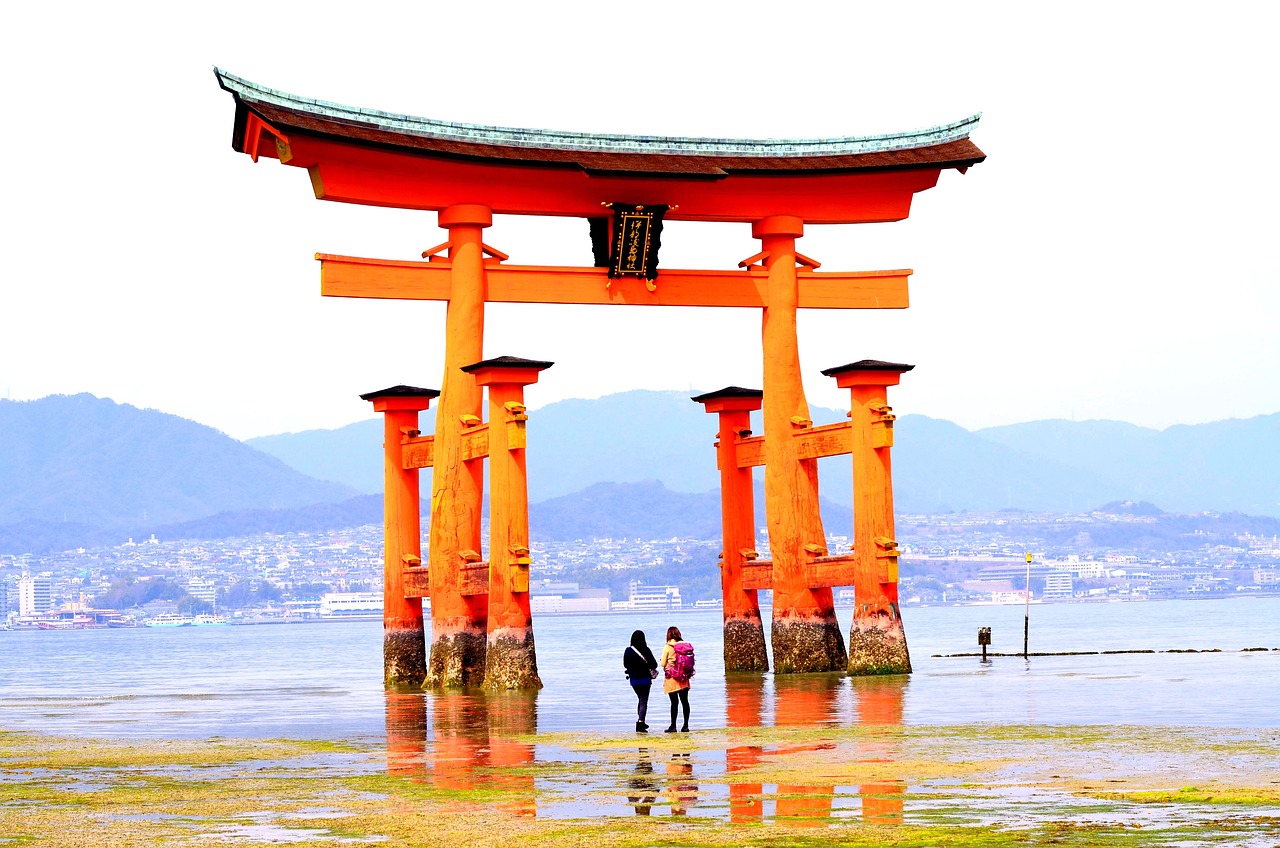
Shinto: The Way of the Kami
Shinto, often referred to as the indigenous spirituality of Japan, is a fascinating tapestry of beliefs, practices, and rituals that have evolved over centuries. At its core, Shinto centers around the worship of kami, which can be understood as spirits or deities that inhabit natural elements such as mountains, rivers, trees, and even human ancestors. This connection to nature is not merely symbolic; it reflects a profound respect for the environment and the belief that everything in the universe is interrelated. In Shinto, the world is alive with spiritual significance, making it a deeply immersive and vibrant tradition.
One of the most striking aspects of Shinto is its emphasis on rituals and festivals. These practices play a crucial role in maintaining harmony between humans and the kami. For instance, purification rituals are essential, as they help to cleanse individuals of impurities and negative influences. This is often achieved through practices such as misogi, which involves washing with water, or harae, a ritual purification performed by a priest. The goal is to enter a state of purity before engaging with the kami, thereby ensuring that the offerings and prayers are received with favor.
Shinto festivals, known as matsuri, are lively celebrations that honor the kami and mark seasonal changes. These festivals often include traditional music, dance, and food, creating a festive atmosphere that brings communities together. Some notable matsuri include:
- Gion Matsuri: Held in Kyoto, this month-long festival features elaborate floats and is a celebration of the local kami.
- Tenjin Matsuri: Celebrated in Osaka, it honors the kami of scholarship and learning with boat processions and fireworks.
- Jidai Matsuri: Also in Kyoto, this festival showcases the history of Japan through a grand parade of people dressed in historical costumes.
Another significant component of Shinto is the role of shrines, or jinja, which serve as sacred spaces where practitioners can connect with the kami. Each shrine is unique, often set in beautiful natural surroundings, which enhances the spiritual experience. Visitors to these shrines typically perform a series of rituals, such as bowing, clapping hands, and making offerings, to show respect and gratitude to the kami. The connection to the kami is not just a personal journey; it fosters a sense of community, as people gather for worship, celebrations, and communal activities.
Shinto’s flexibility is one of its defining features. Unlike many organized religions, it does not have a single holy book or a strict dogma. Instead, it is a collection of practices and beliefs that can vary widely from region to region. This adaptability allows Shinto to coexist with other belief systems, such as Buddhism, which has also had a significant influence on Japanese culture. The blending of these traditions has created a unique spiritual landscape in Japan, where rituals and practices from both religions can often be found side by side.
What are kami? Kami are spirits or deities in Shinto that inhabit natural elements and ancestors, representing the spiritual essence of the world.
How do Shinto rituals work? Shinto rituals typically involve purification, offerings, and prayers performed at shrines to connect with the kami.
What is a Shinto shrine? A Shinto shrine, or jinja, is a sacred space for worship and connection with the kami, often situated in serene natural settings.
Can Shinto be practiced alongside other religions? Yes, Shinto is flexible and can coexist with other belief systems, including Buddhism, allowing for a rich spiritual experience.

Shinto Rituals and Festivals
Shinto, the ancient spiritual practice of Japan, is deeply intertwined with the rhythms of nature and the changing seasons. At the heart of Shinto are its rituals and festivals, which serve as vital expressions of gratitude and reverence towards the kami, or spirits. These rituals are not merely ceremonial; they are a way for practitioners to connect with the divine and the natural world around them. Just as the seasons change, so too do the rituals, reflecting the ever-evolving relationship between humans and the kami.
One of the most significant aspects of Shinto rituals is purification. Before engaging in any ceremony, practitioners often undergo a cleansing process, which can include washing hands and rinsing mouths at a temizuya (purification fountain) found at shrines. This act symbolizes the removal of impurities, both physical and spiritual, allowing individuals to approach the kami with a clear heart and mind. The importance of purification cannot be overstated; it is a way to show respect and readiness to engage with the sacred.
Shinto festivals, or matsuri, are vibrant celebrations that honor the kami and the changing seasons. These festivals often include processions, traditional music, dance, and various offerings. For instance, the Gion Matsuri in Kyoto is one of the most famous festivals in Japan, celebrated throughout July. It features elaborate floats and a parade that showcases the rich cultural heritage of the region. Such festivals not only serve to honor the kami but also to strengthen community bonds, as people come together to celebrate and participate in the festivities.
Another essential ritual in Shinto is the offering of food and sake to the kami, known as shinsen. This act of giving is a way to express gratitude for the blessings received and to seek continued protection and guidance. Offerings can vary based on the season and the specific kami being honored, reflecting the deep connection between the spiritual and natural worlds. For instance, during the harvest season, rice and seasonal vegetables are often offered, symbolizing the bounty of nature and the importance of gratitude for sustenance.
In addition to these rituals, Shinto shrines play a crucial role in the practice of Shinto. They serve as sacred spaces where individuals can come to worship, reflect, and connect with the kami. Each shrine is unique, often nestled in beautiful natural surroundings, reinforcing the Shinto belief in the sacredness of nature. Visitors to shrines are encouraged to engage in rituals such as bowing, clapping hands, and making wishes, creating a personal connection with the spiritual realm.
As we explore the rich tapestry of Shinto rituals and festivals, it becomes clear that they are much more than mere traditions; they are a way of life that fosters a deep respect for nature, community, and the spiritual forces that shape our existence. Through these practices, individuals not only honor the kami but also cultivate a sense of belonging and harmony within the world around them.
- What is the significance of purification in Shinto rituals?
Purification is essential in Shinto as it prepares individuals to engage with the kami, removing impurities and allowing for a clear heart and mind. - How do Shinto festivals reflect Japanese culture?
Shinto festivals, or matsuri, are vibrant expressions of community and cultural heritage, showcasing traditional music, dance, and offerings to the kami. - What types of offerings are made to the kami?
Offerings can include food, sake, and symbolic items, often changing with the seasons to reflect gratitude for nature's bounty.

The Role of Shrines in Shinto
Shrines, or jinja, are the heart and soul of Shinto, serving as sacred spaces where the divine and the human intersect. These structures are not merely buildings; they are living embodiments of spirituality that connect practitioners to the kami, the spirits revered in Shinto. Each shrine is typically dedicated to a specific kami, and its architecture reflects a deep respect for nature and the spiritual world. When you step into a shrine, you’re not just entering a physical space; you're stepping into a realm where the mundane meets the divine.
One of the most fascinating aspects of Shinto shrines is their design and construction. Traditional shrines are often built using natural materials such as wood, which harmonizes with the surrounding environment. This design philosophy emphasizes the Shinto belief in the sacredness of nature. For instance, the iconic torii gate, which marks the entrance to a shrine, symbolizes the transition from the profane to the sacred. It's like a threshold that invites you into a world of spiritual reflection.
Rituals performed at shrines play a crucial role in maintaining the relationship between humans and kami. These rituals can include purification, offerings, and prayers, each designed to show respect and gratitude towards the kami. During festivals, shrines become vibrant centers of community life, where people gather to celebrate seasonal changes and express their hopes and wishes. The atmosphere is often filled with music, dance, and traditional food, creating a sense of togetherness and joy.
Moreover, shrines serve as community hubs, fostering a sense of belonging among practitioners. They are places where people come together not just for worship, but also for social interaction and cultural exchange. Families often visit shrines to celebrate significant life events, such as births, marriages, and coming-of-age ceremonies. This communal aspect reinforces the idea that spirituality in Shinto is not just an individual pursuit but a shared experience that strengthens community bonds.
In summary, the role of shrines in Shinto extends far beyond mere worship. They are vital cultural and spiritual centers that embody the relationship between humans and the divine. Through rituals, community gatherings, and a deep respect for nature, shrines foster a sense of harmony and interconnectedness that is central to Shinto belief. Just as a tree needs its roots to grow and thrive, so too do the people of Japan rely on these sacred spaces to nourish their spiritual lives.
Frequently Asked Questions
-
What are the core beliefs of Buddhism?
Buddhism is centered around the Four Noble Truths, which outline the nature of suffering and the path to enlightenment. The Eightfold Path serves as a practical guide to ethical and mental development, leading to liberation from suffering.
-
How does Taoism define the concept of 'Tao'?
The Tao is often translated as 'the Way' and represents the fundamental principle that underlies and unites the universe. Taoism teaches that by aligning oneself with the Tao, individuals can achieve harmony and balance in their lives.
-
What are some key texts in Taoism?
The two most significant texts in Taoism are the Tao Te Ching and the Zhuangzi. These works provide profound insights into Taoist philosophy, ethics, and the nature of reality.
-
What practices are common in Taoism?
Taoist practices include meditation, tai chi, and various rituals aimed at fostering a deep connection with the Tao. These practices are designed to cultivate inner peace and spiritual balance.
-
How has Taoism influenced Chinese culture?
Taoism has left a lasting impact on Chinese art, literature, and medicine. Its principles of balance and harmony are reflected in various cultural expressions, promoting a holistic understanding of life and nature.
-
What are the main branches of Buddhism?
Buddhism is traditionally divided into three main branches: Theravada, Mahayana, and Vajrayana. Each branch has its own unique teachings, practices, and cultural traditions.
-
What is Shinto and its significance?
Shinto is the indigenous spirituality of Japan, focusing on the worship of kami (spirits). It emphasizes rituals and festivals that celebrate the connection between humans and nature, fostering a sense of community and harmony.
-
What role do shrines play in Shinto?
Shrines are sacred spaces in Shinto where practitioners can connect with the kami. They serve as sites for worship, reflection, and community gatherings, playing a crucial role in maintaining spiritual harmony.
-
What are some common Shinto rituals?
Common Shinto rituals include purification ceremonies and offerings to the kami. These practices help maintain harmony with the spiritual world and celebrate seasonal changes through vibrant festivals.

